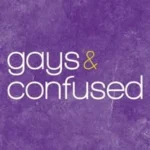To better support the LGBTQ+ community, I’m on a mission to spend more of my money at LGBTQ+ owned businesses. Coffee is a huge part of my life and one of my favorite daily rituals is brewing coffee in the morning. I love starting the day slowly with a cup of coffee and I’ve been interested in supporting more queer owned coffee brands. If you’re a coffee drinker and looking to do the same, here’s a list of LGBTQ+ owned coffee brands bringing more diversity to the coffee industry.

2 Queens
Charles Wilkin and Martin Higgins are the queer royals behind 2 Queens, a shop in Narrowsburg, New York that offers coffee, tea, and honey. The venture is an opportunity to unite Martin’s 25 years of coffee roasting expertise and Charles’ devotion to honeybees. All their coffee is hand roasted to perfection by Martin. While their tea is carefully curated to be all-natural and support honeybees and other pollinators. To celebrate pride every morning, they even offer a special Queer Coffee blend in gorgeous packaging that’ll look great on your kitchen counter. You can visit their Catskills cafe in person or shop their online store.

Equator Coffees
Brooke McDonnell and Helen Russell founded Equator Coffees in 1995 in a Marin County garage. They set out to build a coffee company focused on quality, sustainability, and social responsibility. In 2016, Equator Coffees won National Small Business of the Year by the Small Business Administration, the first LGBTQ+ owned brand to earn this award. Today you can shop their coffee online or visit their cafes in the Bay Area and Southern California.

Queer Wave Coffee
Cheyenne Xochítl Love is the founder of Queer Wave Coffee, a coffee brand with a mission to disrupt the colonial supply chain. All their caffeinated coffee comes from Catracha Coffee Co. in La Paz, Honduras, a social enterprise which allows small coffee farmers to access and profit from the specialty coffee market. Through coffee, Cheyenne, an Indigenous, two-spirit, non-binary trans woman, is committed to dismantling patriarchy, white supremacy, and other oppressions. Every bag of Queer Wave Coffee proudly displays “1312” in the bottom corner.

Uncommon Coffee Roasters
In 1994, Guy Darienzo and Stephen Keye founded Uncommon Coffee Roasters in Saugatuck, Michigan, where their cafe Uncommon Ground quickly became known as, “the local gay coffee shop.” The company takes pride in celebrating diversity, giving back and sustainability, striving to work with companies that share their values. If you’re looking for more novelty products, they do offer a Pride Blend and a Love Wins blend.
To continue supporting the LGBTQ+ community, Uncommon Coffee Roasters donates to the Uncommonly Fabulous Fund, which offers financial support to LGBTQ+ youth and adults in need in the Southwest Michigan area. Visit their cafe in Saugatuck, Michigan or shop their coffee online.

FiNCA To FiLTER
Inspired by her work with coffee producers for Habitat para la Humanidad Guatemala, Kayla Bellman started FiNCA To FiLTER to combine her passions for coffee and social justice. This queer woman-owned business has a commitment to radical transparency, sharing the amount paid to growers, and fostering a sense of kinship and safety for their community, even partnering with ARC-Southeast to serve as a Plan-B outpost.
You can visit one of their cafes in Atlanta, Georgia, or purchase their coffee online.

Queer Coffee
Sourcing high-quality, organic, and fair trade coffee beans, Queer Coffee is a novelty coffee brand that supports LGBTQ+ causes. $2 from every bag sold goes to support the Campaign for Southern Equality, which works to promote full legal and lived LGBTQ+ equality in the south. If you’re looking for pride-themed coffee products, the brand’s logo features fun rainbow colored coffee beans to bring some joy to your morning cup.
I’m always on the lookout for more LGBTQ+ businesses to support and would love to know your favorite queer-owned coffee brands. Not only that, but queer friendly spaces have been so important to my life over the years, what are your favorite LGBTQ+ inclusive coffee shops? Let’s talk about them!
































